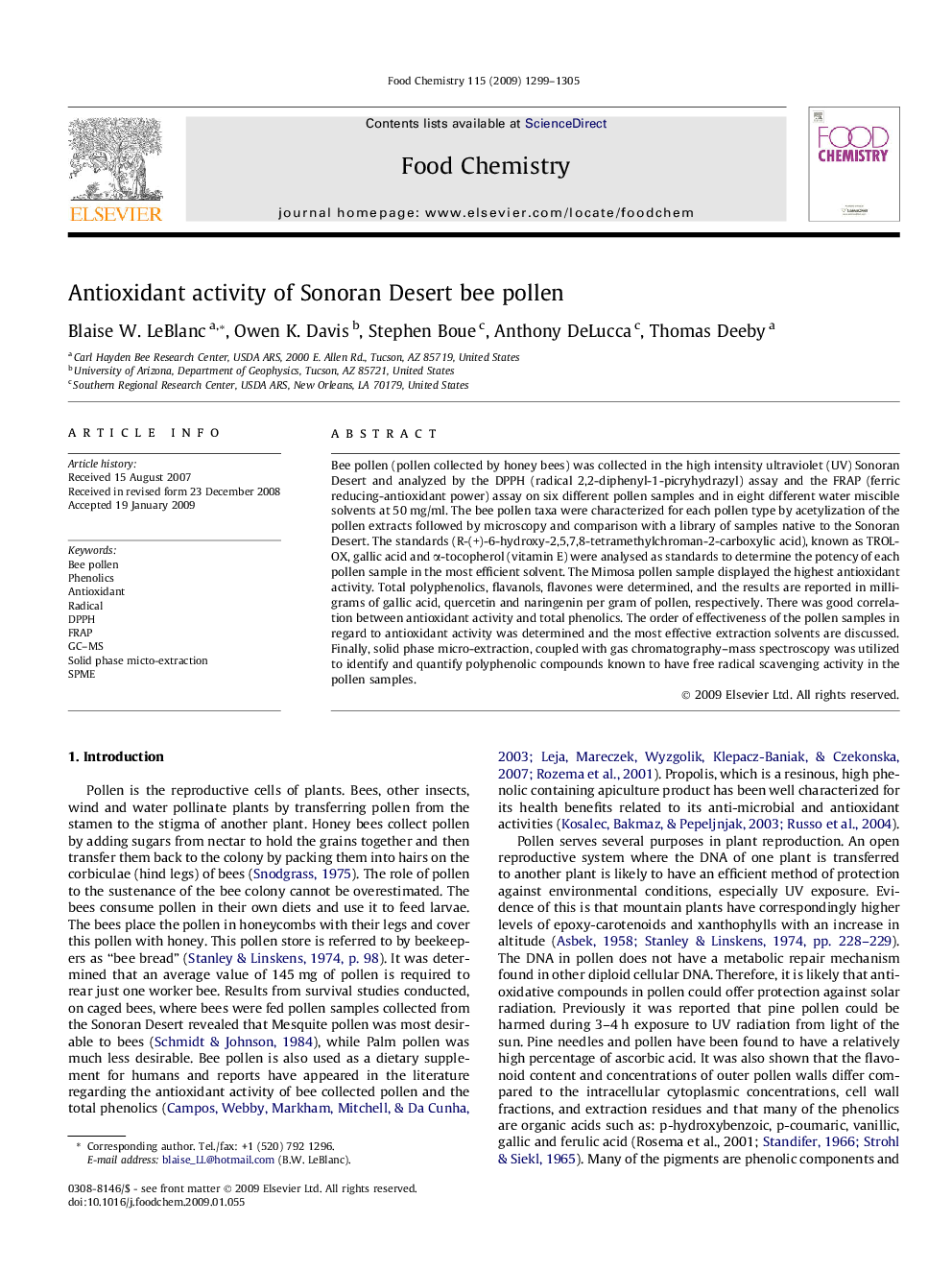| Article ID | Journal | Published Year | Pages | File Type |
|---|---|---|---|---|
| 1187374 | Food Chemistry | 2009 | 7 Pages |
Bee pollen (pollen collected by honey bees) was collected in the high intensity ultraviolet (UV) Sonoran Desert and analyzed by the DPPH (radical 2,2-diphenyl-1-picryhydrazyl) assay and the FRAP (ferric reducing-antioxidant power) assay on six different pollen samples and in eight different water miscible solvents at 50 mg/ml. The bee pollen taxa were characterized for each pollen type by acetylization of the pollen extracts followed by microscopy and comparison with a library of samples native to the Sonoran Desert. The standards (R-(+)-6-hydroxy-2,5,7,8-tetramethylchroman-2-carboxylic acid), known as TROLOX, gallic acid and α-tocopherol (vitamin E) were analysed as standards to determine the potency of each pollen sample in the most efficient solvent. The Mimosa pollen sample displayed the highest antioxidant activity. Total polyphenolics, flavanols, flavones were determined, and the results are reported in milligrams of gallic acid, quercetin and naringenin per gram of pollen, respectively. There was good correlation between antioxidant activity and total phenolics. The order of effectiveness of the pollen samples in regard to antioxidant activity was determined and the most effective extraction solvents are discussed. Finally, solid phase micro-extraction, coupled with gas chromatography–mass spectroscopy was utilized to identify and quantify polyphenolic compounds known to have free radical scavenging activity in the pollen samples.
